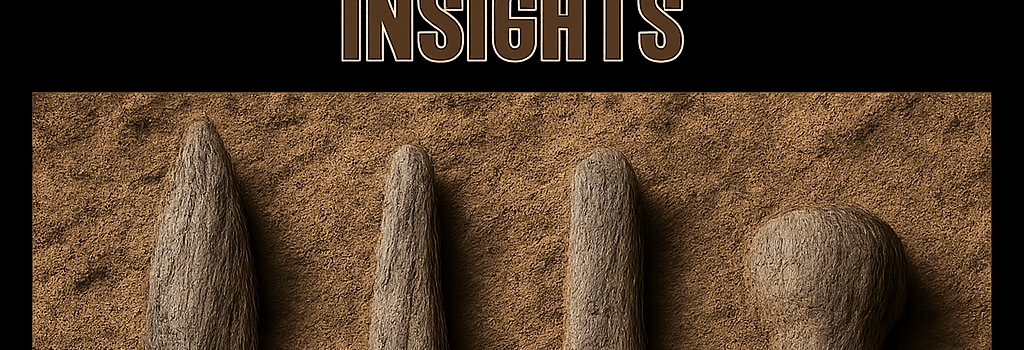Ancient Wooden Tools at Lake Fuxian: Pleistocene Technology Insights

Introduction
Recent excavations at the Gantangqing site on the shores of Lake Fuxian in southwestern China have yielded 35 wooden implements dated between 361,000 and 250,000 years ago. These are the oldest known wooden tools in East Asia, challenging the long-standing “Bamboo Hypothesis” and raising fresh questions about the technological capabilities of Middle Pleistocene hominins in Eurasia.
Archaeological Context and Discovery
Archaeologists from the Yunnan Institute of Cultural Relics and Archaeology, led by Jian-Hui Liu et al. (2025), conducted systematic excavations using stratigraphic profiling and optically stimulated luminescence (OSL) dating of sediment layers. Their multidisciplinary approach combined:
- High-resolution field mapping and GIS spatial analysis.
- OSL dating to establish a chronology from 361–250 ka (thousands of years ago).
- MicroCT scanning to reveal internal whittling scars without destructive sampling.
- Fourier-transform infrared spectroscopy (FTIR) and scanning electron microscopy (SEM) to characterize residual starch granules.
Tool Types and Manufacture
Two-Handed Digging Sticks
Hefty shafts up to 1.2 m in length, carved from mature hardwood species (likely Salix or Populus), display chisel-like distal tips. Wear patterns and micro-polish indicate repetitive percussive use for thrusting into wet soils to extract corms and rhizomes.
One-Handed Hook Implements
These 20–30 cm tools exploit natural root-trunk junctions. The inner edge is honed to a fine bevel, ideal for slicing fibrous tubers. Residue analysis detected degraded amylose structures, confirming plant processing.
Baffling Lozenge-Shaped Tools
Small (5–8 cm) finely carved lozenges with asymmetrical bevels exhibit microwear consistent with scraping or separating intertwined roots. Their precise function remains under debate.
Technological Implications
The sophistication of these wooden implements implies advanced planning, selection of raw materials, and an understanding of mechanical leverage—traits often attributed to later Homo sapiens. Experimental archaeology teams at Lanzhou University have replicated these forms, demonstrating that each tool requires 2–4 hours of continuous carving with sharp stone flakes.
3D Imaging and Material Analysis
Using microCT and 3D photogrammetry, researchers reconstructed the manufacturing sequence. Intermediate whittling stages become visible as layered removal scars. FTIR spectra confirmed the absence of diagenetic contamination, ensuring authentic plant residue signal.
Experimental Replication Studies
- Team: Laboratory of Archaeological Science, Lanzhou University
- Methods: Replication using local willow and alder trees, measuring force application and ergonomic comfort.
- Findings: Two-handed digs exert average thrust force of 150–200 N. Hook tools achieve clean cuts in soft rhizomes with under 30 N of force.
Who Crafted These Tools?
Between 361–250 ka, three hominin groups were plausible inhabitants of Eurasia:
- Homo erectus: Present in East Asia since 1.8 Ma, known for fire use and coastal navigation but rarely associated with complex woodwork.
- Homo heidelbergensis: Middle Pleistocene ancestor of Neanderthals and Denisovans, with evidence of wooden spears in Europe (~400 ka).
- Denisovans: Genomic data and the Harbin cranium (146 ka) confirm their regional presence; their lithic assemblages show refined retouching skills consistent with wooden tool fabrication.
Without co-located hominin remains, species attribution remains provisional. The possibility of multiple overlapping populations further complicates the picture.
Deeper Paleoenvironmental Context
Lake Fuxian’s littoral wetlands would have supported abundant tuberous plants like Typha and Scirpus. Pollen analysis and diatom assemblages indicate seasonally waterlogged soils, ideal for root foraging. Stable isotope ratios in local faunal remains point to a mosaic environment of open shorelines intermixed with coniferous woodland.
Broader Regional Comparisons
Comparable wooden artefacts from Schöningen (Germany, ~300 ka) are spears rather than digging sticks, highlighting divergent adaptive strategies. In Africa, stone-based digging tools appear later (~280 ka) at Border Cave, suggesting parallel but independent technological trajectories.
“The Gantangqing wooden tool assemblage rewrites our assumptions about Middle Pleistocene hominin behavior in East Asia. These implements demand a reevaluation of cognitive and motor skills at least half a million years ago.”—Dr. Mei Wang, paleoanthropologist, University of Beijing
Conclusions and Future Directions
The Lake Fuxian wooden tools expand our understanding of early hominin innovation and resource exploitation in Asia. Future excavations aim to locate associated hominin skeletal remains and conduct residue proteomics to pinpoint plant taxa. These efforts will refine our models of cultural transmission and technological evolution among Middle Pleistocene populations.